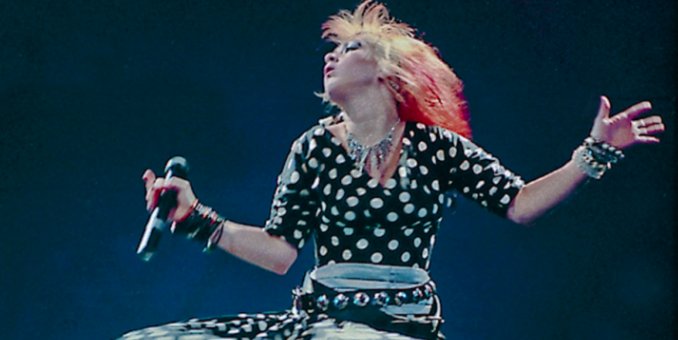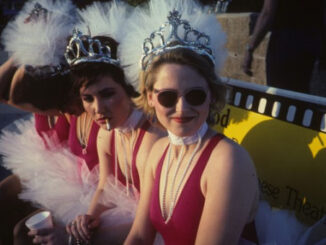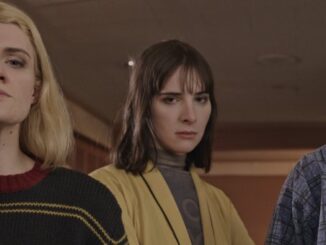
Even though she has rejected the idea of being one, Cyndi Lauper is an icon of pop music. Bursting onto the music scene of the early 1980s thanks to an outrageous fashion style and infectuous brand of pop tunes that perfectly synced-up with the attitude exuded by MTV, the video music cable outlet whose popularity with teenagers was exploding across America, the singer became a star almost immediately. But Lauper did not spring fully formed into the pop cultural zeitgeist in the fall of 1983 with the release of that first single, the poppy anthem “Girls Just Want To Have fun.” There was a long hard road that she traveled on her way to become an overnight sensation. In Let The Canary Sing, director Alison Ellwood – who examined another early 80s female pop phenomenon, the Go-Gos, in a self-titled 2020 documentary – takes us through Lauper’s life from her childhood growing up in first Brooklyn and then Queens, New York to her earlier music career fronting for the band Blue Angel to her at first resisting, and then signing with Portrait Records as a solo act where she would release her landmark debut album She’s So Unusual.
One of the most fascinating segments of the documentary is the section covering her breakout hit, the poppy anthem “Girls Just Want To Have fun.” A search for material for that first solo record, led Lauper and her producer Rick Chertoff to the song, originally written and recorded by the Philadelphia-based rocker Robert Hazard. (Hazard is perhaps best remembered by old timers like myself for his minor 1982 hit “Elevator Of Life.”) At first, Lauper wanted nothing to do with the guitar-driven song, not liking much of the lyrics and feeling that it just wasn’t her style. Chertoff insisted on working on the song and for several months of work with musician Rob Hyman of the Hooters, Lauper worked on reshaping the song’s lyrics and arrangement towards something she felt was more her own.
Director Ellwood, through her interview with Hyman, offers us a listen to some of the demos of the work in progress and it is illuminating to hear the evolution of the tune and listening to what approaches were not working. “[The song is] about fun, but it wasn’t always fun,” Hyman recalls. But when Lauper hits upon the idea to sing in a higher octave, things take a positive turn. We hear Lauper’s iconic vocals on the chorus, singing a capella, and then slowly drums, guitars and keyboards are added to the mix as the familiar song is built right before our eyes and ears.
Let The Canary Sing kind of glosses over much of Lauper’s career after her initial 1980s burst of fame, rushing through about three decades in a short burst at the end of the film. Part of that time was a period of musical experimentation for her, but her explorations of genres like blues didn’t really sell records. How Lauper felt and dealt with that period goes unexplored in comparison to much deeper look Ellwood gives us at the singer’s earlier days. But if the tradeoff for this lack of depth in Lauper’s later years is the in depth look at the journey Cyndi Lauper took to become Cyndi Lauper, then it is a deal worth making.




